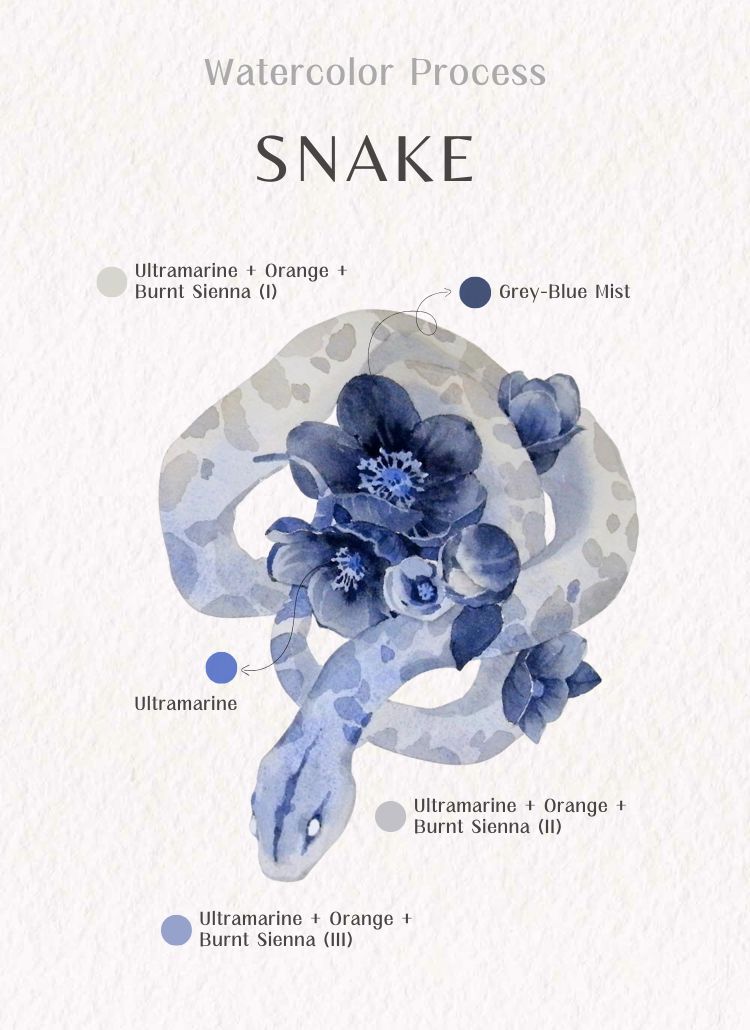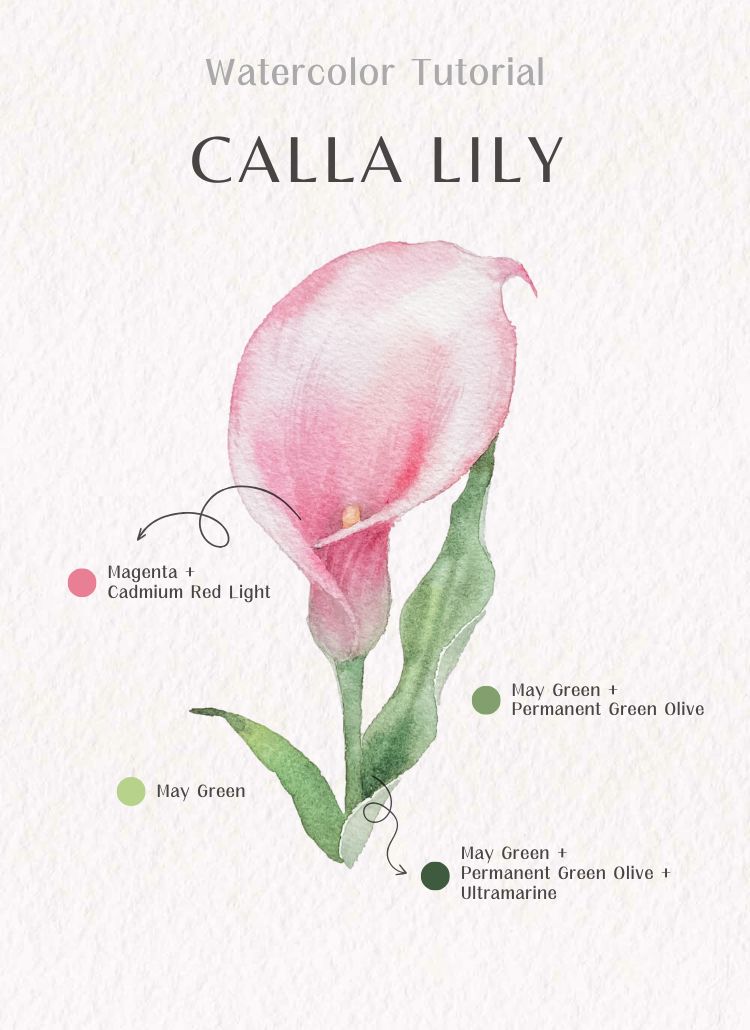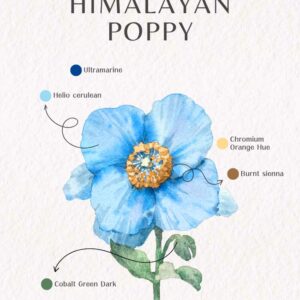Have You Ever Tried Using Masking Fluid?
Or do you know when it can make watercolor painting easier?
Not every artist needs it, but it is actually a very useful tool. After reading this article, you’ll learn how to use it with some tips, and I’ll also share my own experiences.
Let’s get started!
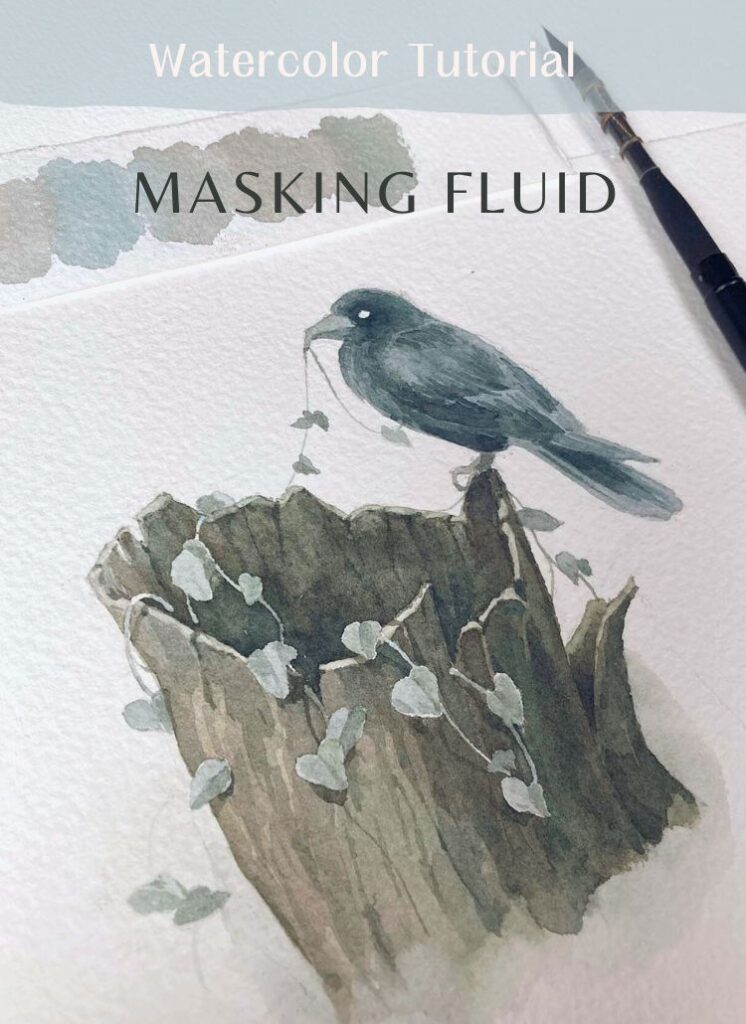
Table of Contents
What is Masking Fluid?
– Masking fluid is a thick liquid that temporarily covers the surface of the paper. Once dry, it forms a waterproof layer that prevents moisture from seeping in, helping to preserve the white or base color of the paper.
– It usually has a light blue or yellow pigment, making it easier to see on white paper. This not only helps ensure precise application but also prevents missing any spots when removing it.
– It is commonly used to preserve highlights, small details, or intricate patterns, adding depth to the painting. It can also be applied using sponges or splatter techniques to create unique textures.
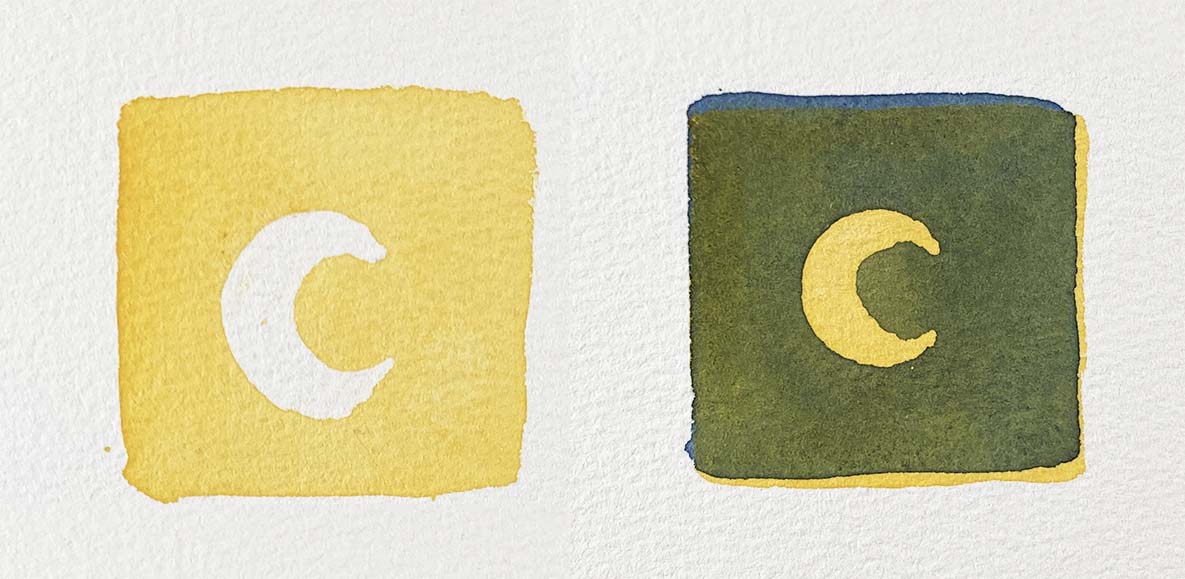
Left: First, Masking fluid is used to create the shape of a moon. After it dries, yellow watercolor is painted over it. Once the paint dries, removing the masking fluid reveals the moon shape.
Right: A yellow square is painted with watercolor and left to dry. Then, a moon shape is masked off. Once dry, a layer of blue watercolor is applied over the entire area. Finally, removing the masking fluid reveals a yellow moon.
Tools You’ll Need
– Masking Fluid: Brands like Schmincke, Winsor & Newton, and Holbein are recommended. A small bottle is usually enough for long-term use.
– Masking Pens: Brands such as MOLOTOW (Germany) and JANUA offer different tip sizes for precision.
– Brushes: Regular watercolor brushes can be used, but it’s best to use old brushes or silicone brushes since masking fluid can damage bristles.
– Soapy Water: Dip your brush in soapy water before using masking fluid to protect the bristles.
– Other Tools: Creasing Pens can be used to create dots and fine lines.
– Rubber Cement Eraser or Erasers: Used for removing dried masking fluid.
How to Use Masking Fluid Correctly
– Ensure the paper is dry : Avoid applying masking fluid on wet paper, as it may not adhere properly.
– Use old brushes or silicone brushes : This prevents damage to watercolor brushes, though old brushes may lose their fine tips. Personally, I also like using a Creasing Pen (see image below).
– Wait for the masking fluid to dry completely before starting to paint : The drying time depends on its thickness and the environmental humidity.
– Avoid excessive brushing over masked areas : Repeated strokes may compromise the coverage and affect the final result.
– Remove the masking fluid only after it is completely dry : You can use an eraser or rubber cement eraser to remove it. Some people use their fingers, but I personally don’t recommend it because the oils from your fingers can make the paper dirty.
– Clean tools immediately : dried masking fluid can ruin brushes. I’ve personally lost two new brushes this way—heartbreaking! However, if you’re using metal or plastic tools, it can be easily peeled off.
Helpful Tips
- Test Before Use – Different brands vary in drying time, thickness, and ease of removal, so always test before applying it to your artwork.
- Thin Layers Work Better – A thicker application doesn’t mean better coverage. In fact, overly thick masking fluid makes it harder to create fine lines and details. You can dilute it slightly with water while maintaining its waterproofing and masking properties.
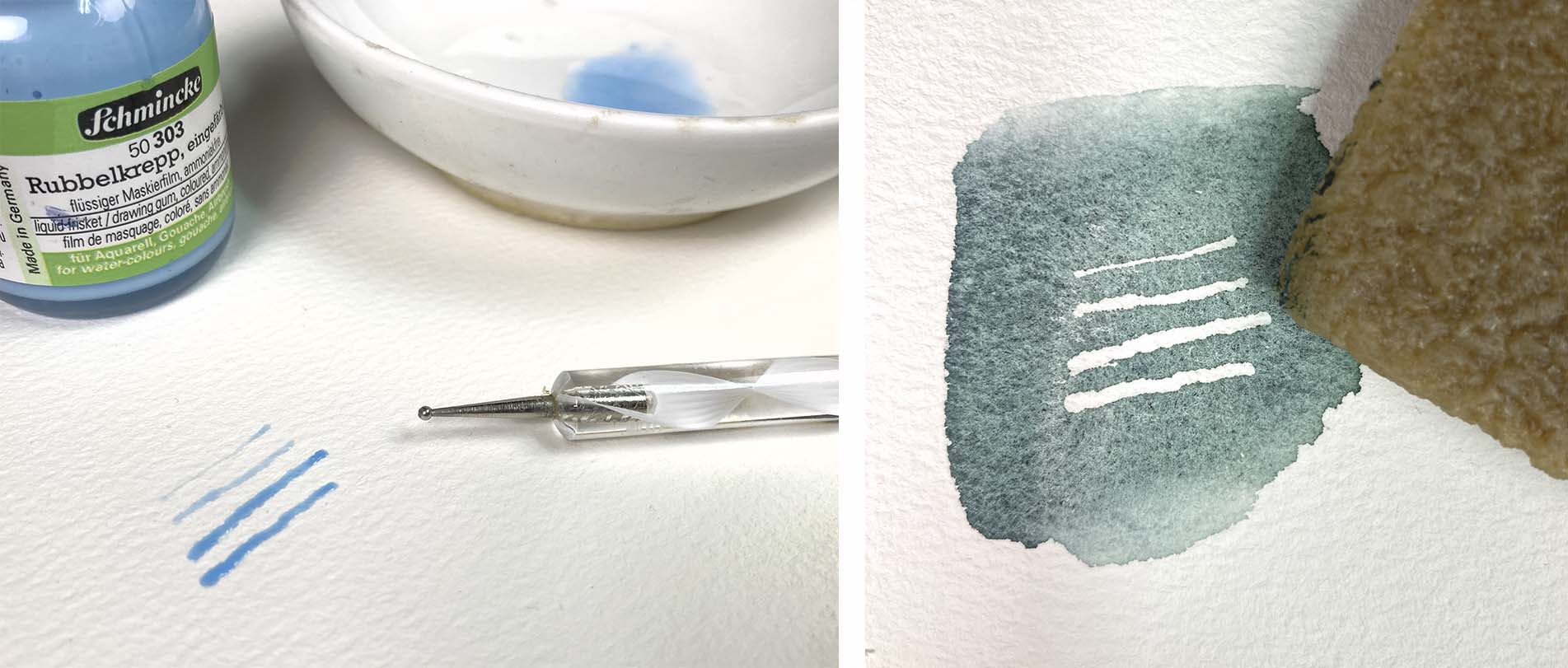
Left: The top two lines were made using diluted fluid and a Creasing Pen, while the bottom two lines used undiluted fluid. Dilution allows for finer lines.
Right: After the mask dries, I paint with watercolor and let it dry. Finally, I remove it using a rubber cement eraser. As you can see, the diluted version still provides excellent coverage.
Common Issues & How to Avoid Them
– Paper Gets Damaged When Removing Masking Fluid:The possible cause of paper damage is either the paper being too thin or not allowing the watercolor to dry completely.
The solution is to use thicker watercolor paper (300gsm) and ensure the paint is fully dry before removal.
When using rubber to remove the mask, avoid rubbing too hard, as this may scratch the surface of the paper, exposing the white underneath.
– Applying Masking Fluid Too Thickly:Thick layers may appear dry on the surface while remaining wet underneath, causing issues when painting over them.
It’s better to apply a thin layer, as it dries faster and ensures even coverage. You can gently press or touch the masking fluid to check if it’s completely dry.
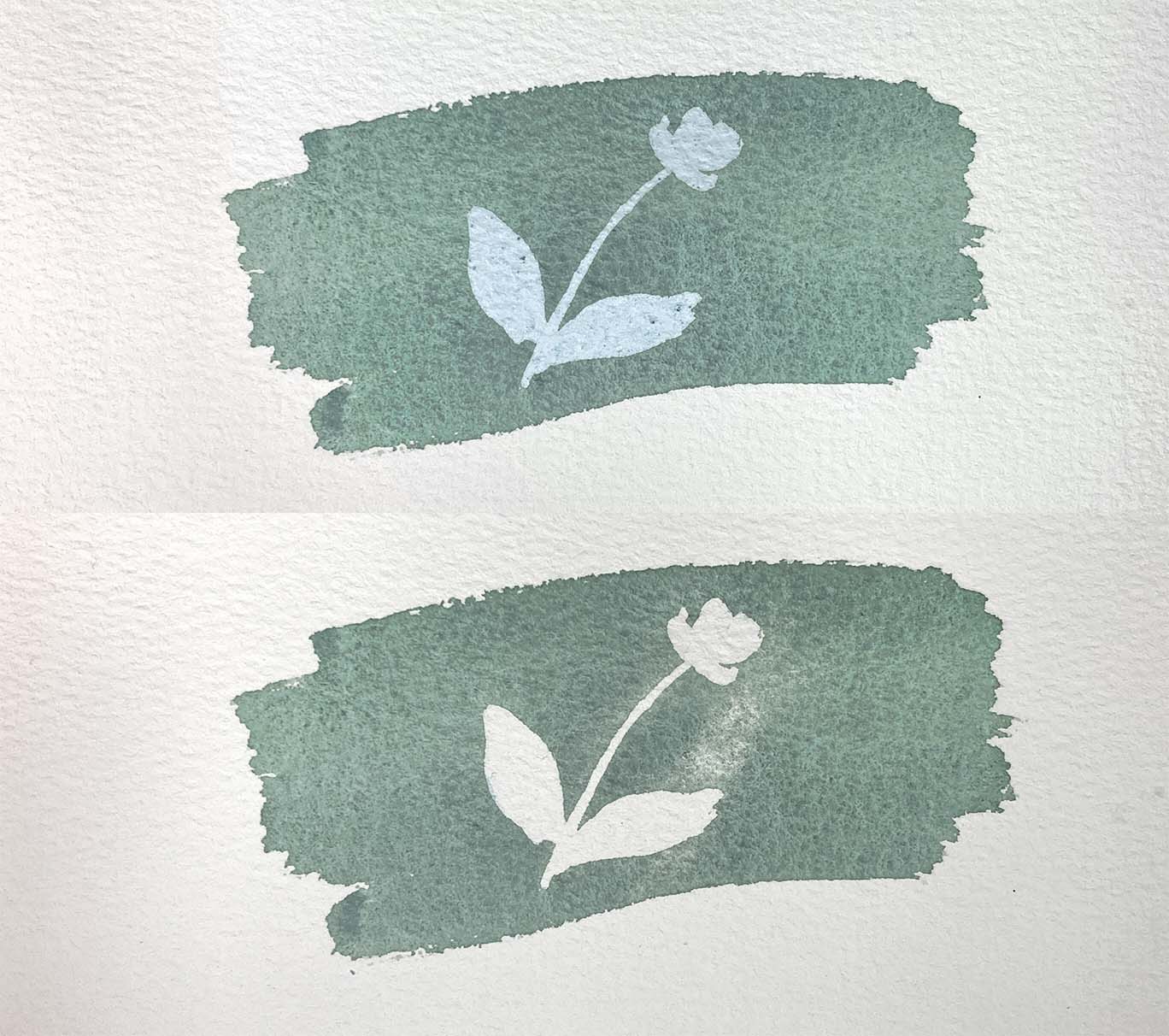
Bottom: Excessive force when removing the mask caused damage to the paper surface.
Example
Masking fluid makes it easier to paint elements like stars, moons, streetlights, snow on trees, and flower centers.
By covering intricate details first, you can freely paint the background without worrying about avoiding specific areas.
Here’s an example of my process:
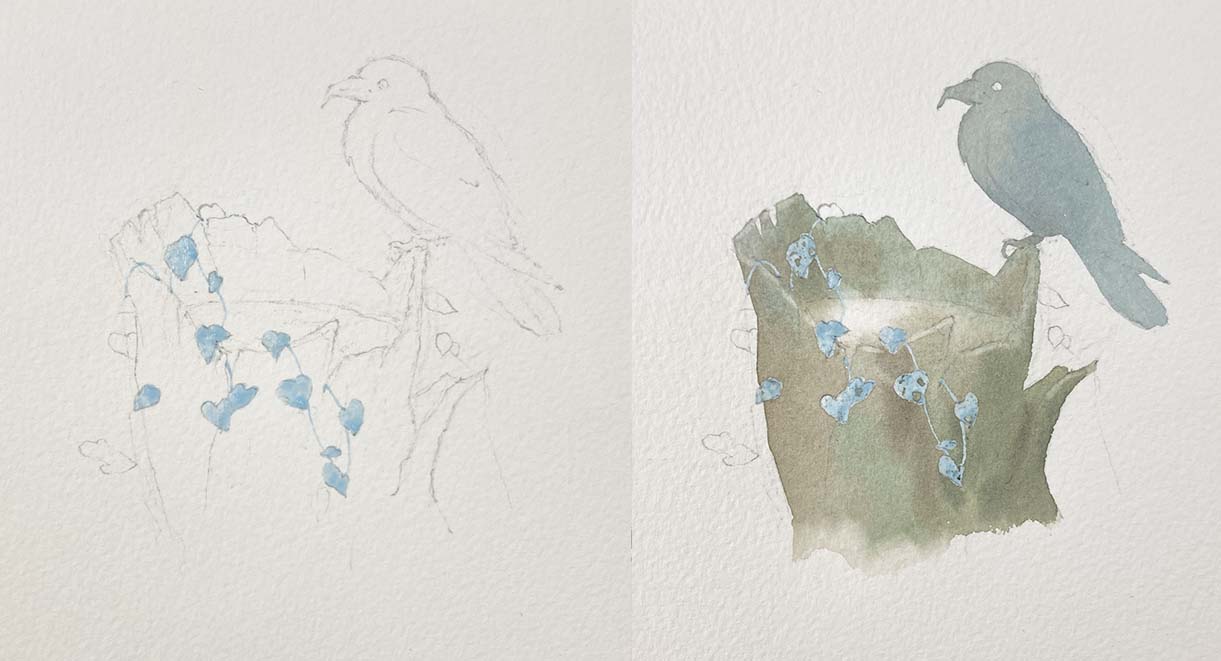
Left: After completing the pencil sketch, I cover the leaves and stems.
Right: I begin painting with watercolor directly.
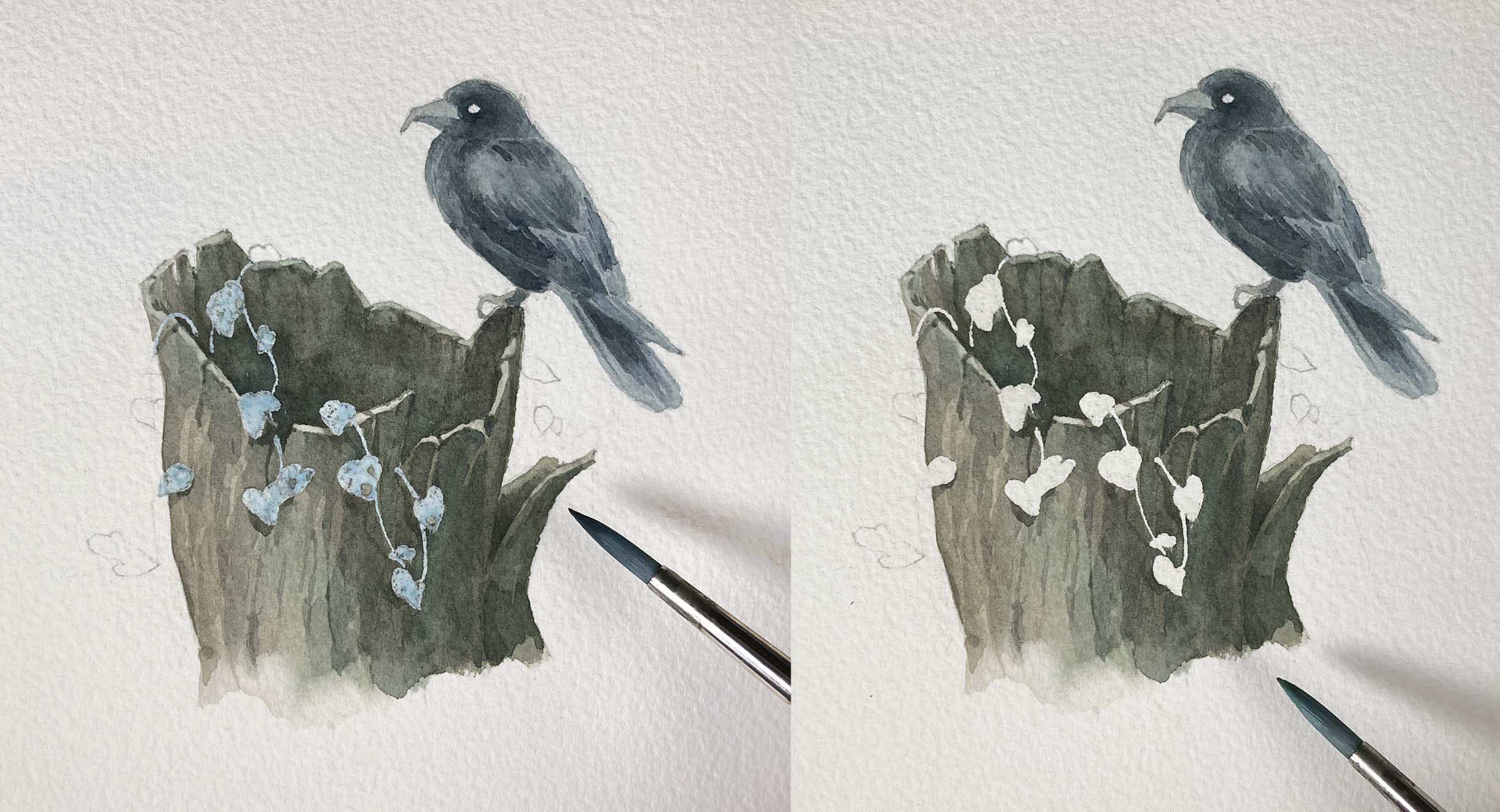
Left: After completing the areas outside of the masked section, wait for it to dry.
Right: Once the masking fluid is removed, you can start painting the leaves and adding more details.
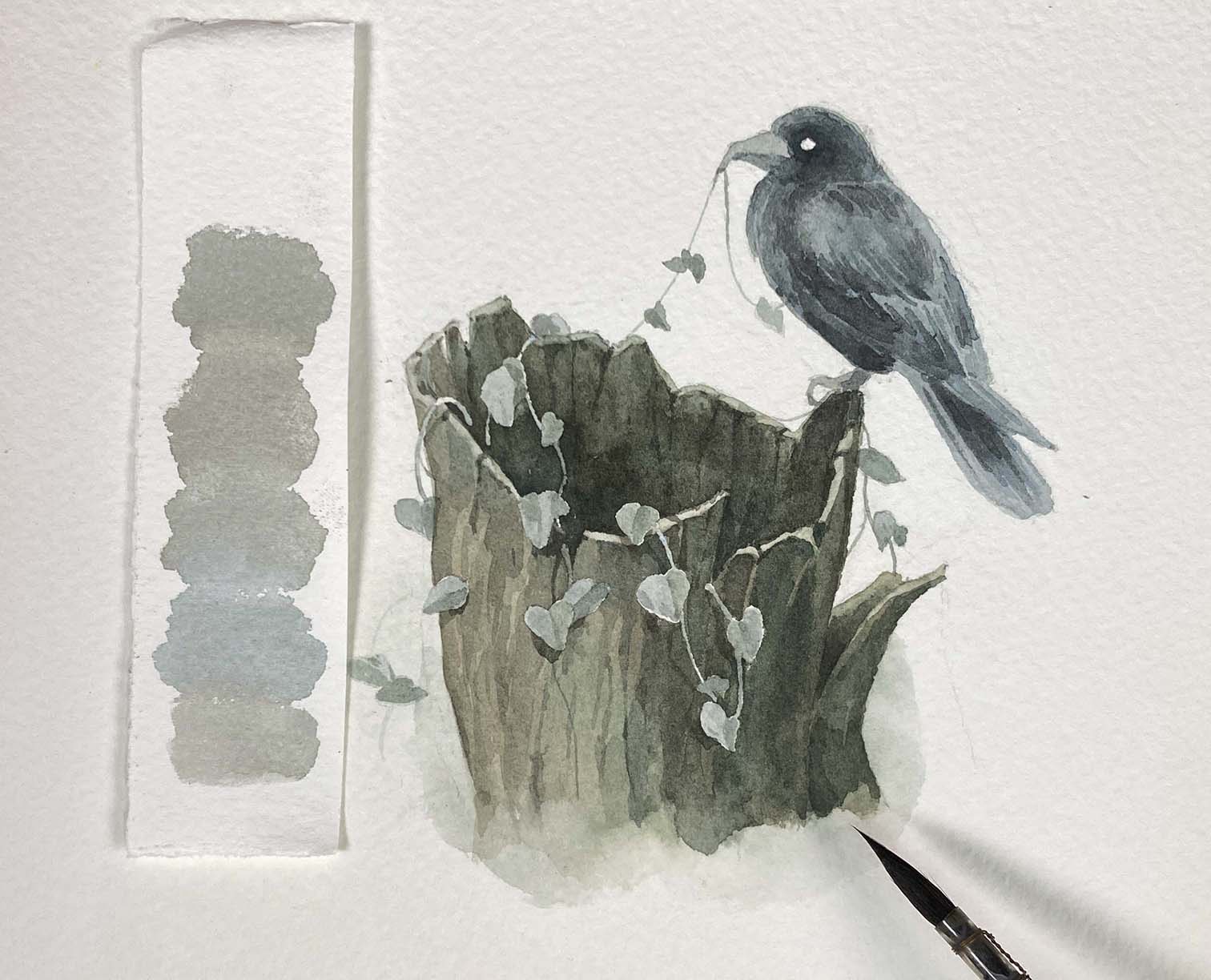
Actually, if you don’t use masking fluid, you can still carefully avoid the leaves while painting the tree trunk.
However, in this case, masking the leaves first makes the entire process smoother, and it helps prevent color variations in the areas separated by the leaves.
Conclusion
After reading this article, do you have any ideas on how to use masking fluid in your artwork?
It can help enhance the details and depth of your work, but the key is knowing the right techniques and when to use it.
I hope that after reading this, along with some hands-on practice, you’ll be able to use it more effectively and add more dimension to your artwork!
More articles on watercolor supplies:
A Beginner’s Guide to Watercolor Paper
Watercolor Pans or Tubes-Which One is Right for You?
The Complete Guide to Watercolor Brushes
